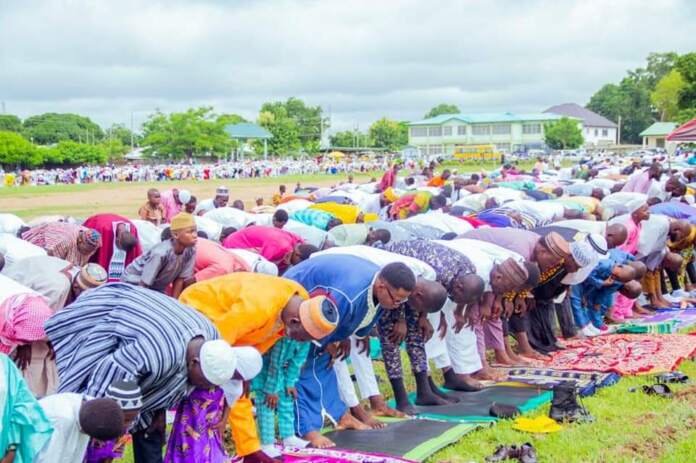Muslims celebrate Eid-ul-Adha today

Muslims across the world celebrate Eid-ul-Adha to commemorate Prophet Ibrahim’s devotion to Allah (SWT) and his readiness to sacrifice his son, Ismail.
The celebrations, also known as the “Festival of Sacrifice” is the second of the two Islamic festivities, which is celebrated annually worldwide.
Muslims approach God on this day by sacrificing a sheep, a cow, or a camel and distributing the meat to the poor. They unite to pray together with family and friends and show love.
Eid-ul-Adha falls on the tenth day in the twelfth month of the Islamic Lunar Calendar; Dhul-Hijjah, which allows families, loved ones, and communities to fraternise, and is dependent on a legitimate sighting of the moon, following the completion of the annual Holy Pilgrimage of Hajj – which is an obligation for all Muslims.
The command from Allah (SWT) is a test of Prophet Ibrahim’s willingness and commitment to obey his Lord’s command, without question.
At the point of sacrifice, Allah (SWT) replaced Ismail with a ram, which was to be slaughtered in place of his son.
So, during the celebration, the sacrificial animal must be a sheep, lamb, goat, cow, bull, or a camel; the sheep, lamb or goat consist of one share, whereas a bull, cow or camel consist of seven shares per animal.
The animal must be in good health and over a certain age to be slaughtered, in a “halal” friendly, Islamic way.
The meat can then be divided into three equal portions per share; one-third for the owner and family, one-third for friends, and the final third to be donated to those in need.
The act of the sacrifice is usually carried out after Eid Prayers, which are performed in congregation at the nearest Mosque on the morning of Eid.








